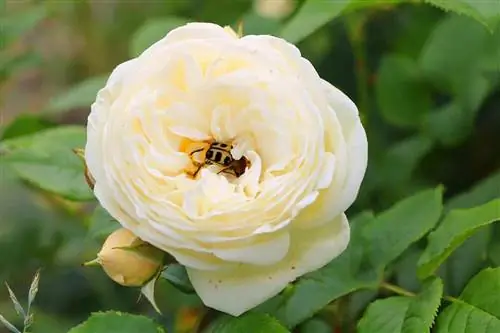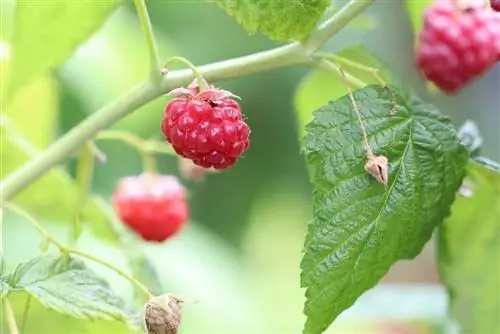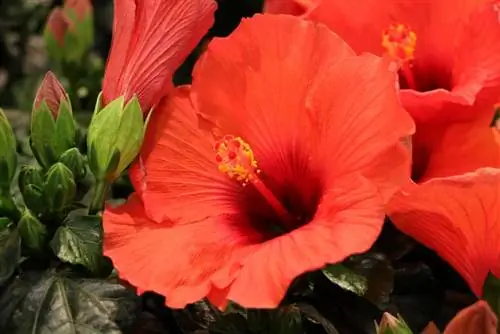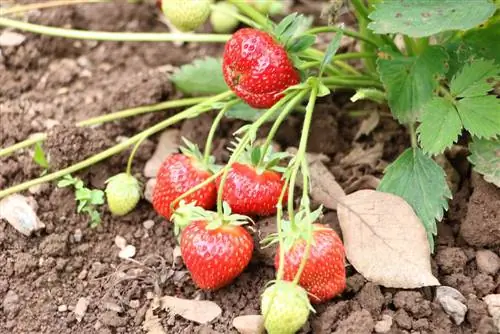- Author admin [email protected].
- Public 2023-12-17 03:39.
- Last modified 2025-01-24 12:45.
Orchids can be found in many households. However, they are often not granted a very long life. A possible reason for this is pests such as lice, which can weaken the plants unnoticed for a long time. As annoying as the pest is, in most cases it can be combated with simple means and measures. We reveal which paths are possible.
Controls
One of the most important measures against pest infestation on the orchid and necessary for early control is regular control of the plant. Even if the parasites themselves are not always visible, changes can be noticeable. However, you have to look very carefully. The undersides of leaves, narrow spaces between leaves and shoots and the substrate must be checked. Eggs, discolored suction points or selective changes can be noticeable, as can deposits and weaving.
Tip:
The orchid should be examined carefully when purchasing it so as not to introduce any pests or diseases. Because these can also occur in well-maintained garden centers.
Culture
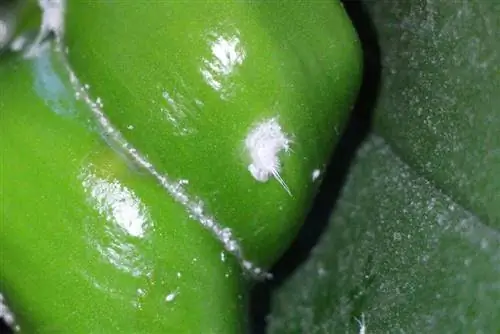
An important protection against pests on orchids is coordinated care, which of course must be tailored to the type of orchid and its requirements. Incorrect temperatures or low humidity are often contributing factors to pest infestation. In addition to checking the plant, the culture conditions should also be checked occasionally. Particular attention should be paid to the following factors:
- Location, including temperature and lighting conditions
- Watering behavior
- Fertilization
- Humidity
Substrate
Some pests, such as mealybugs, can stay in the substrate for long periods and are therefore not noticed even during inspections. If they become active again, they usually appear unexpectedly and in large numbers. However, this retreat into the ground makes them not only difficult to detect, but also difficult to combat. After a pest infestation, the substrate should be changed. Regularly replacing the soil is also a preventive measure, as the old substrate also removes any bugs and eggs that may be present.
Lice
The most common pests on orchids are lice. These include aphids and scale insects, such as mealybugs and mealybugs, which are plant lice. Due to their small size, in many cases they are not immediately noticeable. The infestation only becomes visible when damage has already occurred. Then quick and thorough action is required to eliminate the pest and prevent it from spreading further.
Aphid

Aphids can be green or black and feed on the sap they suck from leaves and shoots. The consequences are local discoloration at the suction points and a weakening of the orchid. Since the aphids excrete so-called honeydew, they attract other insects and also increase the risk of a fungal infection. Early control is therefore important. To do this, proceed as follows:
- The aphids are first removed mechanically by wiping them with a damp kitchen towel or scraping them with a fingernail.
- The affected orchid is sprayed or brushed with a soft soap solution. The solution is intended to kill overlooked parasites and also remove the sticky residue.
- After an exposure time of ten minutes, the plant is rinsed thoroughly. The substrate should also be changed.
Scale insect
Mealybugs and mealybugs are scale insects and, when infested, become noticeable through cotton-like or woolly webs and greasy deposits. The webs and waxy secretions serve as protection for the lice, which can make removal from the orchid difficult. The easiest choice is therefore a suitable pesticide from a specialist retailer. This should be oil-free so that it does not clog the pores of the plant. A natural alternative to this is releasing Australian ladybirds. However, these require a warm, humid environment, which is not always possible.
Two home remedies have also proven effective for eliminating pests. The plant can be soaked for about half an hour in lukewarm water to which a splash of commercially available dishwashing liquid has been added. The surface tension changes due to the detergent and the lice drown.

A little more aggressive and therefore not suitable for sensitive orchids is the use of a spirit-washing liquid or a spirit-soft soap solution. Add ten milliliters of spirit and detergent or soft soap to one liter of water. Using a brush, the solution is then applied specifically to the areas affected by scale insects. After an exposure time of ten to 30 minutes, the solution is rinsed off thoroughly. When fighting scale insects, the substrate must also be urgently changed in order to remove the parasites that reside in it.
Mites
Real and false spider mites can be problematic for the orchid as they multiply quickly and damage the leaves and shoots. The pests are also difficult to detect due to their size of less than a millimeter. Signs of an infestation can include webs, but not all spider mites form these. A silvery discoloration of the leaves is also a possible indication. Wiping the top and bottom of the leaf with a white sheet of paper or cloth will provide information. If colored dots appear on it, the mites have been wiped off. Unfortunately, this test is not sufficient to combat the pests.
This is possible with spider mites due to:
- Rinse regularly, do not soak the plant
- Targeted increase in humidity
- Use of pesticides containing neem oil
- Applying predatory mites
Running water is important because the spider mites stay alive through air sacs when submerged. However, the measure must be repeated daily and even then not all pests are usually removed. An alternative or additional way to combat it is to specifically increase the air humidity. To do this, the orchid is rinsed or sprayed and then wrapped with foil and placed under a hood or in a greenhouse. The pests usually die within a few days. To avoid mold and rot, the plant should be rinsed daily and the substrate changed after treatment. In addition, the coverage should not be for more than three days.
If the treatments do not have sufficient effect, pesticides with neem oil can be used. Compared to other preparations, the spider mites do not appear to have developed any resistance to this. Another natural alternative are predatory mites of the genus Phytoseiulus persimilis. These are predators of spider mites. You eliminate the pests very directly, but do not injure or stress the orchid.
Sad gnats
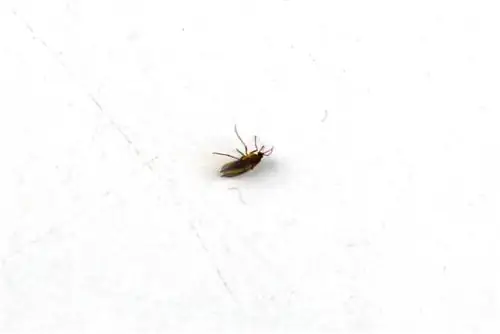
The adult fungus gnats are visually reminiscent of fruit flies and rise from the substrate and leaves when disturbed. They are not a direct threat to the orchid - but their larvae can cause lasting damage to the plant, as they feed on roots, among other things.
If fungus gnats are noticed, both the adult insects and the larvae must be eliminated. This is possible through the following measures:
- Remove and replace the substrate or heat it through in the oven or microwave. A nice side effect of heating is that any other pests and germs that may be present are also killed. However, replacing fungus gnats is usually the better choice, as the larvae not only feed on roots, but also on humus.
- When changing the soil, the roots should be rinsed and damaged sections should also be removed if they have wilted. The interfaces should be allowed to dry for a few hours before being placed back into the substrate. This reduces the risk of rot and penetrating germs.
- Yellow signs or appropriate sticky traps are set up for any fungus gnats that may still be present on the plant or in the surrounding area.
Tip:
If the infestation is very light, it may be sufficient to just set up traps. This eliminates the adult fungus gnats and means they can no longer lay eggs. However, it is necessary to leave the traps on the plants for several weeks to months to prevent them from spreading again.
Springtails
They are up to five millimeters tall, white and, true to their name, stand out with their jumping, hopping movements. The pests on the orchid are often noticeable when watering because they are driven out of the substrate by the water and gather on the surface.
Fighting root pests is very easy and doesn't take much time:
- The root ball, including the pot and substrate, are immersed in water in a bucket or bowl to which a splash of dishwashing liquid has been added beforehand.
- The water washes the springtails to the surface, the detergent changes the surface tension and causes the pests to drown. After an hour all parasites should be eliminated.
- So that the orchid does not suffer from the detergent or become overwatered due to flooding, the substrate should be completely replaced.
Changing the soil immediately without soaking it first is usually not enough, as springtails and their eggs are still on the roots and can therefore move into the new substrate.


